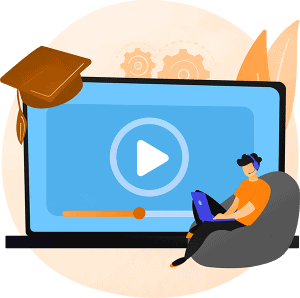Masterclass Webinar
Video in Learning and Development
How to Get the Most Out of It
Join Martin Addison – CEO of Video Arts – in this webinar about using video in L&D. Martin will be sharing practical advice and commentary on the changing role of video in learning and best practices for using video in the virtual classroom. During this webinar, Martin will also talk about storytelling through video, and how to create different types of videos according to the learning needs of your organization.

View Now!

Martin Addison | CEO | Video Arts
With more than 25 years’ experience in the learning content and technologies business, Martin has become one of the foremost speakers and thought leaders on the subject of video in learning. Since they were founded by John Cleese in 1972, Video Arts have provided engaging video learning solutions to organizations to support their employees’ professional development. The way we work has changed massively over the years. The rise in trends like remote and distributed working have changed many of our work patterns. The way we learn has changed too. With dispersed and diverse workforces, organizations need to be able to offer learning in soft and hard skills to people at a time and in a format that is suitable to each individual. The topics and formats might have changed, but our aim remains the same: to educate through entertainment.

More Speexx Resources
Storytelling Through Video in Learning
Video storytelling originally stems from marketing, where it is used to tell a story about a brand, company or product. Video storytelling guides viewers through relatable narrative-based content, creating an emotional connection with the viewers. Video storytelling draws people in, maintaining their attention span and making them personally invested in the content.
Video stories used in learning can have a much greater impact than regular, traditional content. By using a complex combination of factors – such as camera angles, lighting, music, text, and dialogue, videos stimulate the mind of learners, increasing retention and engagement.However, successful video storytelling takes time and effort.
The Changing Role of Video in Learning
In recent years video content has gained traction, and video-sharing platforms have come to the mainstage, gaining huge popularity. YouTube, the most popular video-sharing platform (having more users than all the other social media platforms) has 2 billion logged-in monthly users in 2020, and over 500 hours of content are being uploaded onto the platform every minute.
The increased popularity of video has meant a natural extension of it in the educational sector, whether we are talking about corporate or academic learning. The adoption of video in learning has also been driven by millennials and Gen Z – digital-savvy generations that have grown up watching digital video content. As these generations enter the workforce, there is an increased expectation for Learning and Development content delivery to also adapt to their needs and manners of communicating, working, and learning.
Studies have shown that the use of short video clips allows for more efficient processing and memory recall. The visual and auditory nature of videos appeals to a wide audience and allows each user to process information in a way that’s natural to them. Video can also break down barriers between learners and coaches. However, this increased demand of video has also meant more pressure and higher standards when it comes to video.

